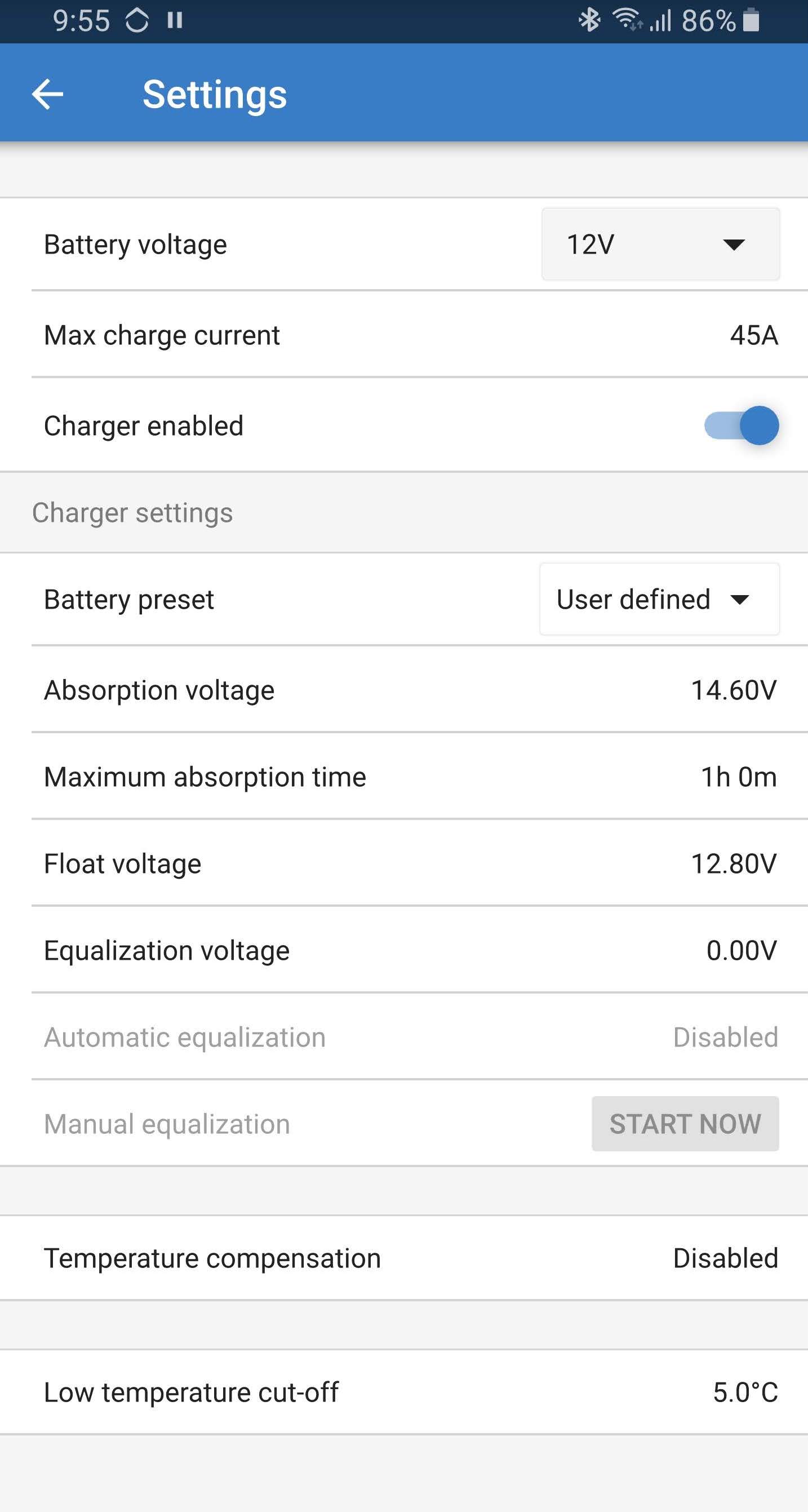I have an Victron 150/45TR MPPT charge controller being fed by 600 watts of Renogy panels wired in series.
This is hooked up to two, wires in parallel Renogy 170ah lithium ion batteries.
According to their spec sheet they are "recommended" to be charged to 14.6 volts. I don't want to do that and would prefer charging to 14.2
Looking at the spec sheet, Renogy says the following.
Standard Charge shall consist of charging at 0.2C constant current rate until the battery reaches 14.6V. The battery shall then be charged at a constant voltage of 14.6V while tapering the charge current. Charging will terminate when the charging current has tapered to a 0.02CA. Charge Time is approximately b7 hours. Safe Charging consists of temperatures between 32 ºF and 113 ºF.
Does the battery stop accepting charge from the MPPT once the current has tapered? Does the MPPT know when to stop charging the battery? How do I know when these are full? How does the system know when these are full?
Lastly, what should my absorption voltage and time be? How about the float voltage? Battery University says these batteries should really just be charged in bulk phase to ~90 or 95% capacity and then turn off charging. What does the MPPT aim to charge these at during bulk phase? That doesn't seem to be a setting I can adjust.
Sorry for so many questions, this I am new to all this.
Thanks in advance!


 This graph makes me think that the batteries are only around 20% full.
This graph makes me think that the batteries are only around 20% full. 





